When it’s cold outside, it’s tempting to think of a scarf merely as a way to keep your neck warm–but it can actually be quite a stylish complement to your cold-weather outfits. Does price impact this, though, and if so, how?
A scarf is a fantastic way to add some color, patterns, and visual interests to your outfit. Of course, a scarf must not just be beautiful, but also functional and warm. Even though it might not seem like it from the outset, a $20 scarf is very different in terms of color, pattern, material, length, and especially, the details. So today, we got a $20 scarf from Target, and we’re comparing it to a $95 scarf and a $195 scarf.
When I was looking for $20 scarves, I noticed that most of them come usually in shades of black or grey. For scarves, the big problem with black, gray, or other dark colors like navy, is that most outerwear (overcoats in particular) is also black, gray, or navy. So if you have a scarf in the same color, there’s not enough visual contrast to make for an interesting outfit. You want a special color; let’s say, a burnt orange, maybe a nice yellow, or something green.
With a less expensive scarf, you can look for a long time, but these colors usually don’t exist. On the other hand, more expensive scarves usually come in much more sophisticated color palettes. There is a much broader range of unusual colors that are contrasting to your general outerwear. Of course, when patterns are involved, they’re usually multiple colors that are all designed to work well together, but they make it incredibly easy for you to combine them with other colors and accessories. What accessories, you might think? Well, especially gloves, and maybe a hat because when it’s cold outside, that’s what you need.
Other than the color, the pattern is also really important for a scarf. Most “standard” scarves are just plain solids, but even the weave can have an impact on how it’s perceived. In my experience, most cheap scarves come either in a solid color (such as black, gray, navy, or maybe red), and if they have a pattern, it’s usually some form of a check. This is somewhat inspired or copied from a Burberry scarf.
In my research, most cheap scarves don’t seem to have a sophisticated color palette. Rather, they usually feature white, sometimes red, and that’s about it. They’re also mostly designed as scarves for women, which means they’re oftentimes thinner and also a little bit shorter. Even if they’re designed as a unisex scarf, they are never made specifically for men, which means they don’t really work 100% for men. Overall, they’re just bland and at best, functional.
On the other hand, if you invest in a more expensive scarf, you’ll get lovely patterns like a bold or classic paisley or a micropattern similar to that of a tie. They are designed in a way that works well with typical overcoat patterns, such as a herringbone. Sometimes, they also come in small micro-checks or bolder stripes, so even if you have a striped overcoat, the scarf will still work with it very harmoniously.
Also, while $20 scarves have the same pattern on each side, more expensive scarves, oftentimes, come in a tubular design featuring different patterns and/or colors on each side. You can also play with materials and have, let’s say, a silk side on one side and a wool or wool-silk blend on the other. For example, a $95 scarf from Fort Belvedere which is woven in alpaca. It’s rather thick, keeps you really warm but when you tie it around your neck, the different colors on each side just create a very nice visual interest. Still, you don’t always have to show it to others, so you can just have one color show or both depending on how you feel and what your outfit looks like.
The $20 scarf is made from 100% acrylic (which is also known as nylon), so it’s an artificial fiber that is extremely inexpensive. It’s very soft, but it’s also very prone to pilling so it’s not an investment. This scarf won’t be a piece that you can wear for years to come, because it will look pilled and old and ugly after probably a season or two. That’s especially true for men with beard stubble, so it’s just something that won’t stand the test of time.
On the other hand, more expensive scarves are made from different materials, preferably natural materials. Why? Because they’re soft, they’ll keep you warm, and if the yarns are of a long staple length, it is just something that will be around for years to come. If you upgrade a little bit (let’s say you go with a $95 scarf), you will likely encounter all-wool scarves which keep you warm, or you could go with something like an alpaca scarf (which is lanolin-free and also keeps you warmer than wool).
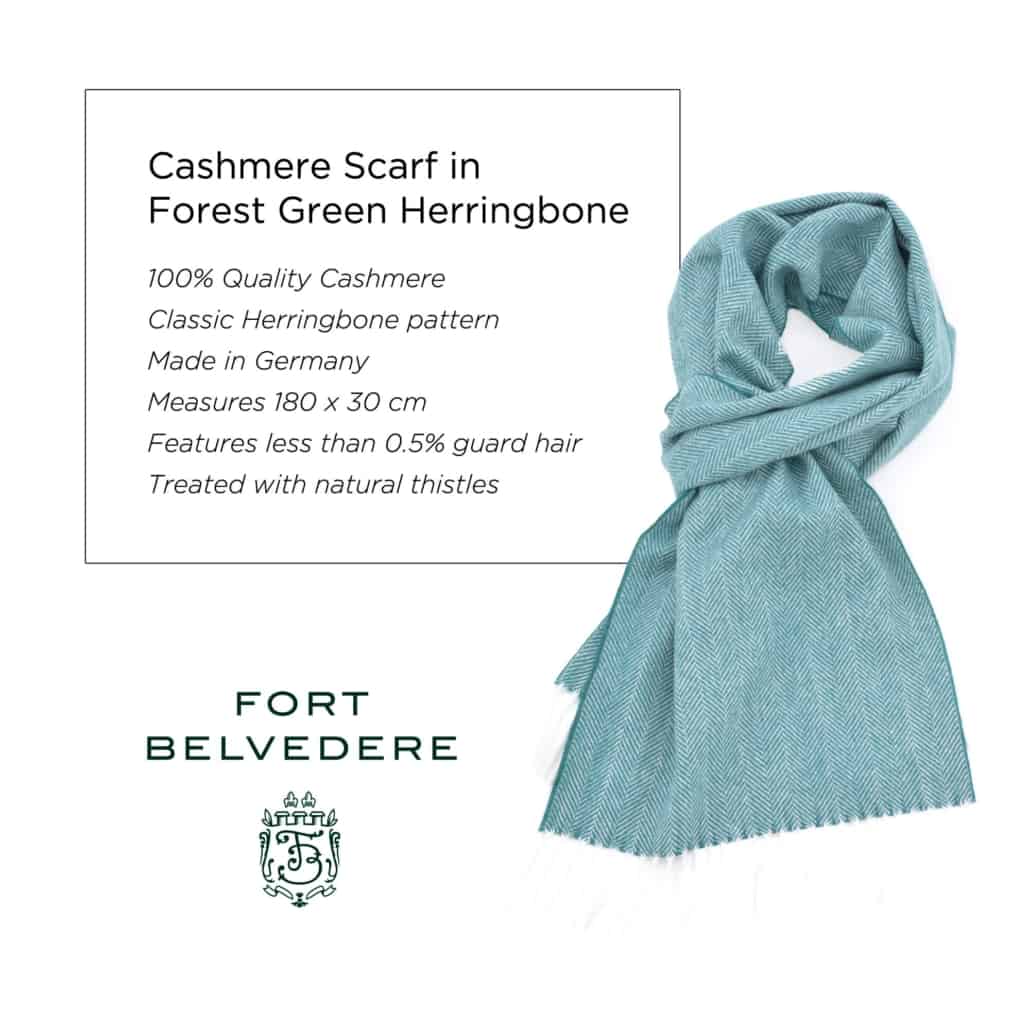
One of the classic premium scarf materials is cashmere. It’s derived from a goat and is extremely soft, yet at the same time, it’s warm. Because there’s a relatively low amount of friction (unlike with a pair of cashmere socks or a cashmere sweater), a quality product should last for decades. Not all cashmere or wool is alike, though, and just because something is 100% wool doesn’t mean it’s the same quality as another scarf that comes in 100% wool.
While most people just look at the material composition, the weave of a scarf is also very important. It has a huge impact on the density of the fabric and how heavy it is. A $20 scarf is typically more lightweight, because they want to use less material even though it may have a much larger surface. Considering today’s items, the nylon scarf from Target is much bigger (but lighter) than the other scarves from Fort Belvedere, which are slimmer. In a nutshell, the more expensive scarf will be warmer and more comfortable on your skin, and will last longer.
One thing that’s rarely discussed when it comes to scarves is the climate you live in. With a $20 scarf, they usually come one-size-fits-all, designed for women, maybe unisex, never for men, and they don’t come in different weights. There’s just one kind that supposedly works for everyone. Now if you live in Canada where it gets really cold, of course, you need a scarf that keeps you very warm. On the other hand, if you live in the Caribbean or let’s say, in Arizona, where you have just very mild winters and you just want a little something, a cashmere scarf would be overkill and will just make you sweat all the time.
Expensive scarf manufacturers such as Fort Belvedere offer different weight classes, so you can get exactly the scarf that works in your climate. Meanwhile, the $20 scarf from Target is a middle-of-the-road scarf. It is not made for very mild climates, but also not made very cold climates. A silk-wool blend scarf from Fort Belvedere is a little thinner and it’s made for milder winters. The wool with a silk blend still insulates enough, but it’s not something that will make you overheat. It is rather elegant and stylish for a really cold winter. Our cashmere scarves have the same pattern on both sides, but they have a really nice color, are very soft, and keep me very warm.
If warmth is the thing I care about the most, then I’d go with one of our $95 alpaca scarves, simply because the alpaca hair is hollow and has air inside of it, meaning it insulates better than other natural fibers. Also, because the scarf is double-sided, it’s rather heavy and substantial. The weave is very tight (so no air blows through it), and it’s still very soft because it’s royal baby alpaca. So overall, no matter where you live, there is a scarf for you that works for your climate.
Last but not least, an underrated aspect in regards to scarves is the dimension. For men, we found that most scarves that are about 30 centimeters (or 12 inches) wide and 180 centimeters (72 inches) long are really great for men, because they allow you to wear scarves in many different ways. On the other hand, women’s scarves are often quite wide, meant to be doubled up, and worn in a different way. So for men, they usually don’t work quite as well.
The $20 scarf from Target is rather wide and thin, with a loose and open weave. The other ones from Fort Belvedere are more tightly woven, in more high-quality materials, and have exactly the right dimensions for elegant gentlemen. Sometimes, I see men who prefer an even longer scarf. Personally, I don’t like it as much, because then it dangles outside of my coat–but of course, at the end of the day, it all depends on your personal preference.
So why is it that the $20 scarves come in different dimensions than more expensive scarves, you might wonder? Well, basically, the cheaper scarf is designed in a way so you can get the most yield out of the woven fabric (so you can sell the most pieces). On the other hand, a more expensive scarf is designed with the wearer in mind. We want something that makes you look good and comfortable and warm when you wear it. So that approach just shows in the way everything is done, from the dimensions to the feel, the longevity, and the way it combines with the rest of your wardrobe.
At the end of the day, if all you have is $20, I suggest you go with a solid color, and go with something that contrasts with your peacoats or other overcoats. If you’re ready to step up your scarf game, I suggest you get at least three or four different ones in different weight classes, because sometimes you may want something in a transitional season (spring or fall). Other times, you’ll want something for a really cold winter, with different colors, patterns, and scales. This way, you can change the entire look of your outfit just by changing a few accessories, such as your gloves and your scarf.
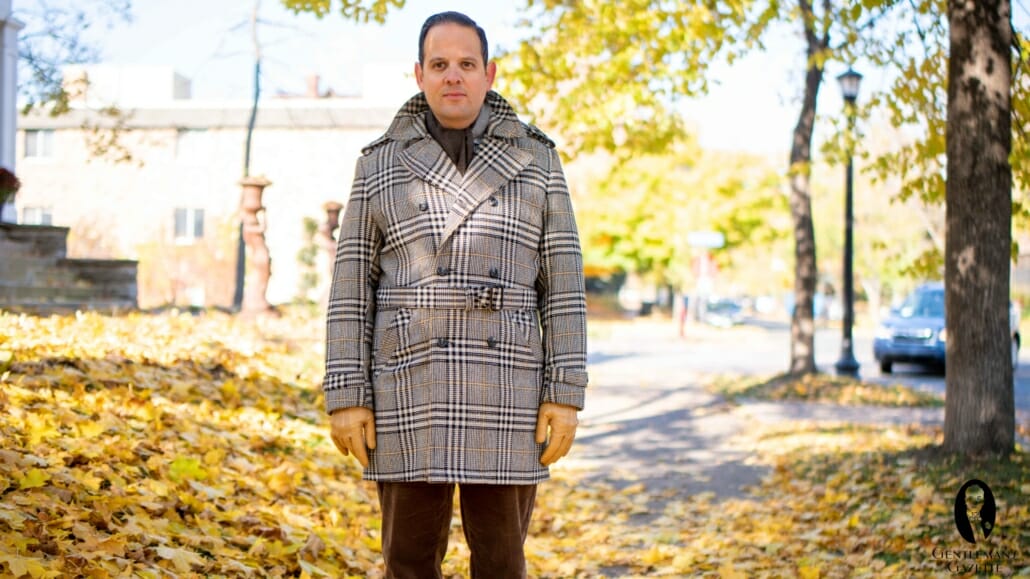
Even if you think you will not get the value out of a $200 scarf because it’s ten times as expensive as a $20 scarf, I urge you to think about it this way: if the inexpensive scarf just lasts you one or two seasons (versus the expensive scarf lasting you 20 years), the cost-per-wear is roughly the same. At the same time, it feels more comfortable, it keeps you warmer, it is designed for you and your situation and overall, you’ll just always look better and more presentable.
Differentiating $20 vs. $200 Scarves
A scarf is a fantastic way to add some color, patterns, and visual interests to your outfit. Of course, a scarf must not just be beautiful, but also functional and warm. Even though it might not seem like it from the outset, a $20 scarf is very different in terms of color, pattern, material, length, and especially, the details. So today, we got a $20 scarf from Target, and we’re comparing it to a $95 scarf and a $195 scarf.
Scarf Colors
When I was looking for $20 scarves, I noticed that most of them come usually in shades of black or grey. For scarves, the big problem with black, gray, or other dark colors like navy, is that most outerwear (overcoats in particular) is also black, gray, or navy. So if you have a scarf in the same color, there’s not enough visual contrast to make for an interesting outfit. You want a special color; let’s say, a burnt orange, maybe a nice yellow, or something green.
With a less expensive scarf, you can look for a long time, but these colors usually don’t exist. On the other hand, more expensive scarves usually come in much more sophisticated color palettes. There is a much broader range of unusual colors that are contrasting to your general outerwear. Of course, when patterns are involved, they’re usually multiple colors that are all designed to work well together, but they make it incredibly easy for you to combine them with other colors and accessories. What accessories, you might think? Well, especially gloves, and maybe a hat because when it’s cold outside, that’s what you need.
Scarf Patterns
Other than the color, the pattern is also really important for a scarf. Most “standard” scarves are just plain solids, but even the weave can have an impact on how it’s perceived. In my experience, most cheap scarves come either in a solid color (such as black, gray, navy, or maybe red), and if they have a pattern, it’s usually some form of a check. This is somewhat inspired or copied from a Burberry scarf.
In my research, most cheap scarves don’t seem to have a sophisticated color palette. Rather, they usually feature white, sometimes red, and that’s about it. They’re also mostly designed as scarves for women, which means they’re oftentimes thinner and also a little bit shorter. Even if they’re designed as a unisex scarf, they are never made specifically for men, which means they don’t really work 100% for men. Overall, they’re just bland and at best, functional.
On the other hand, if you invest in a more expensive scarf, you’ll get lovely patterns like a bold or classic paisley or a micropattern similar to that of a tie. They are designed in a way that works well with typical overcoat patterns, such as a herringbone. Sometimes, they also come in small micro-checks or bolder stripes, so even if you have a striped overcoat, the scarf will still work with it very harmoniously.
Also, while $20 scarves have the same pattern on each side, more expensive scarves, oftentimes, come in a tubular design featuring different patterns and/or colors on each side. You can also play with materials and have, let’s say, a silk side on one side and a wool or wool-silk blend on the other. For example, a $95 scarf from Fort Belvedere which is woven in alpaca. It’s rather thick, keeps you really warm but when you tie it around your neck, the different colors on each side just create a very nice visual interest. Still, you don’t always have to show it to others, so you can just have one color show or both depending on how you feel and what your outfit looks like.
Scarf Materials
The $20 scarf is made from 100% acrylic (which is also known as nylon), so it’s an artificial fiber that is extremely inexpensive. It’s very soft, but it’s also very prone to pilling so it’s not an investment. This scarf won’t be a piece that you can wear for years to come, because it will look pilled and old and ugly after probably a season or two. That’s especially true for men with beard stubble, so it’s just something that won’t stand the test of time.
On the other hand, more expensive scarves are made from different materials, preferably natural materials. Why? Because they’re soft, they’ll keep you warm, and if the yarns are of a long staple length, it is just something that will be around for years to come. If you upgrade a little bit (let’s say you go with a $95 scarf), you will likely encounter all-wool scarves which keep you warm, or you could go with something like an alpaca scarf (which is lanolin-free and also keeps you warmer than wool).

Fort Belvedere Cashmere Scarf in Forest Green
One of the classic premium scarf materials is cashmere. It’s derived from a goat and is extremely soft, yet at the same time, it’s warm. Because there’s a relatively low amount of friction (unlike with a pair of cashmere socks or a cashmere sweater), a quality product should last for decades. Not all cashmere or wool is alike, though, and just because something is 100% wool doesn’t mean it’s the same quality as another scarf that comes in 100% wool.
Scarf Weaves
While most people just look at the material composition, the weave of a scarf is also very important. It has a huge impact on the density of the fabric and how heavy it is. A $20 scarf is typically more lightweight, because they want to use less material even though it may have a much larger surface. Considering today’s items, the nylon scarf from Target is much bigger (but lighter) than the other scarves from Fort Belvedere, which are slimmer. In a nutshell, the more expensive scarf will be warmer and more comfortable on your skin, and will last longer.
Withstanding Climates
One thing that’s rarely discussed when it comes to scarves is the climate you live in. With a $20 scarf, they usually come one-size-fits-all, designed for women, maybe unisex, never for men, and they don’t come in different weights. There’s just one kind that supposedly works for everyone. Now if you live in Canada where it gets really cold, of course, you need a scarf that keeps you very warm. On the other hand, if you live in the Caribbean or let’s say, in Arizona, where you have just very mild winters and you just want a little something, a cashmere scarf would be overkill and will just make you sweat all the time.
Expensive scarf manufacturers such as Fort Belvedere offer different weight classes, so you can get exactly the scarf that works in your climate. Meanwhile, the $20 scarf from Target is a middle-of-the-road scarf. It is not made for very mild climates, but also not made very cold climates. A silk-wool blend scarf from Fort Belvedere is a little thinner and it’s made for milder winters. The wool with a silk blend still insulates enough, but it’s not something that will make you overheat. It is rather elegant and stylish for a really cold winter. Our cashmere scarves have the same pattern on both sides, but they have a really nice color, are very soft, and keep me very warm.
If warmth is the thing I care about the most, then I’d go with one of our $95 alpaca scarves, simply because the alpaca hair is hollow and has air inside of it, meaning it insulates better than other natural fibers. Also, because the scarf is double-sided, it’s rather heavy and substantial. The weave is very tight (so no air blows through it), and it’s still very soft because it’s royal baby alpaca. So overall, no matter where you live, there is a scarf for you that works for your climate.
Scarf Dimensions
Last but not least, an underrated aspect in regards to scarves is the dimension. For men, we found that most scarves that are about 30 centimeters (or 12 inches) wide and 180 centimeters (72 inches) long are really great for men, because they allow you to wear scarves in many different ways. On the other hand, women’s scarves are often quite wide, meant to be doubled up, and worn in a different way. So for men, they usually don’t work quite as well.
The $20 scarf from Target is rather wide and thin, with a loose and open weave. The other ones from Fort Belvedere are more tightly woven, in more high-quality materials, and have exactly the right dimensions for elegant gentlemen. Sometimes, I see men who prefer an even longer scarf. Personally, I don’t like it as much, because then it dangles outside of my coat–but of course, at the end of the day, it all depends on your personal preference.
So why is it that the $20 scarves come in different dimensions than more expensive scarves, you might wonder? Well, basically, the cheaper scarf is designed in a way so you can get the most yield out of the woven fabric (so you can sell the most pieces). On the other hand, a more expensive scarf is designed with the wearer in mind. We want something that makes you look good and comfortable and warm when you wear it. So that approach just shows in the way everything is done, from the dimensions to the feel, the longevity, and the way it combines with the rest of your wardrobe.
Conclusion
At the end of the day, if all you have is $20, I suggest you go with a solid color, and go with something that contrasts with your peacoats or other overcoats. If you’re ready to step up your scarf game, I suggest you get at least three or four different ones in different weight classes, because sometimes you may want something in a transitional season (spring or fall). Other times, you’ll want something for a really cold winter, with different colors, patterns, and scales. This way, you can change the entire look of your outfit just by changing a few accessories, such as your gloves and your scarf.

Sven Raphael Schneider wearing a vintage double-breasted check plaid overcoat from Austin Reed with an Alpaca double-sided scarf and leather gloves
Even if you think you will not get the value out of a $200 scarf because it’s ten times as expensive as a $20 scarf, I urge you to think about it this way: if the inexpensive scarf just lasts you one or two seasons (versus the expensive scarf lasting you 20 years), the cost-per-wear is roughly the same. At the same time, it feels more comfortable, it keeps you warmer, it is designed for you and your situation and overall, you’ll just always look better and more presentable.
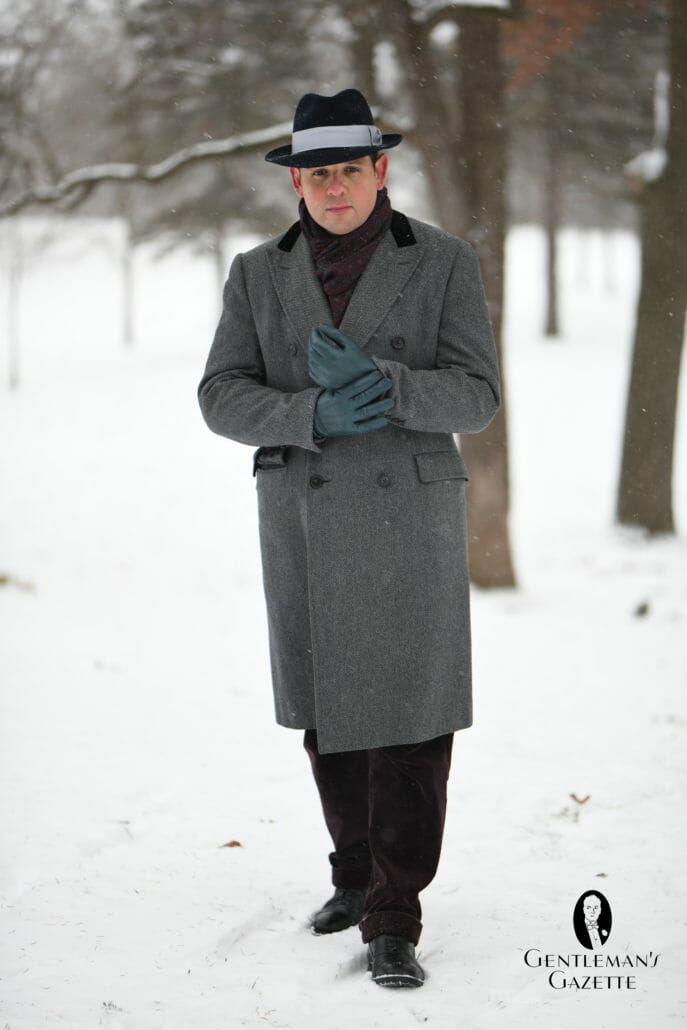
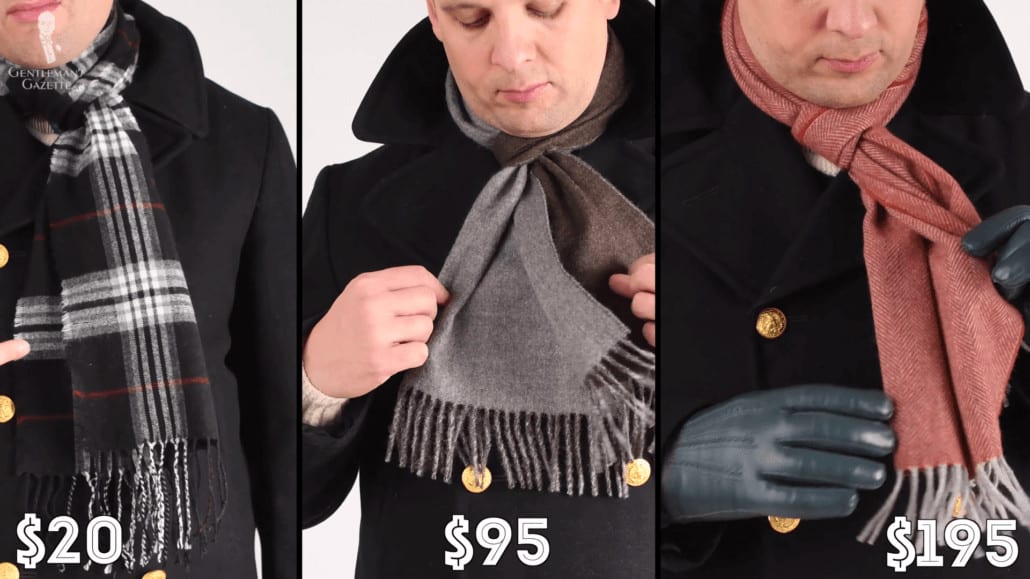
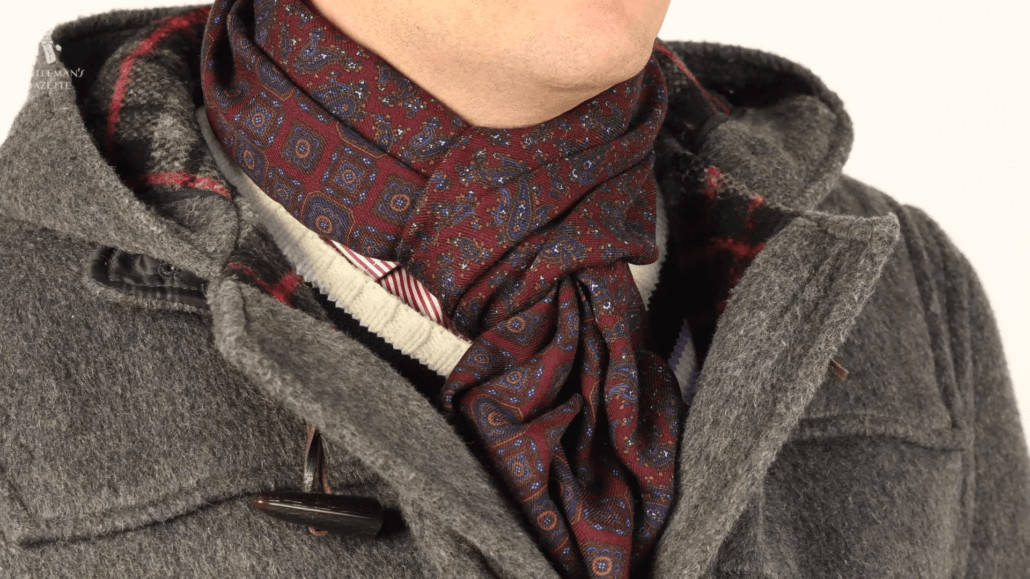
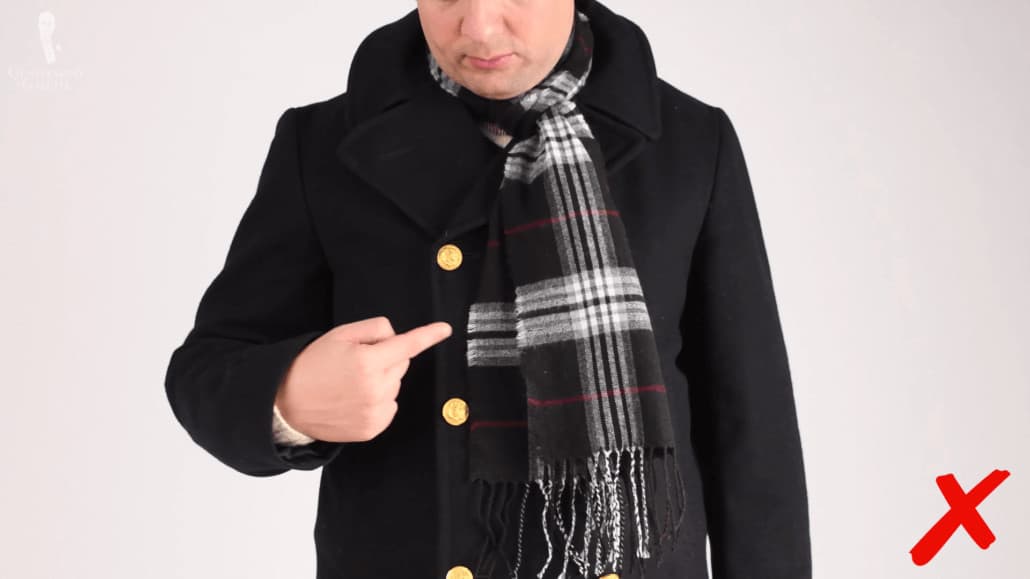
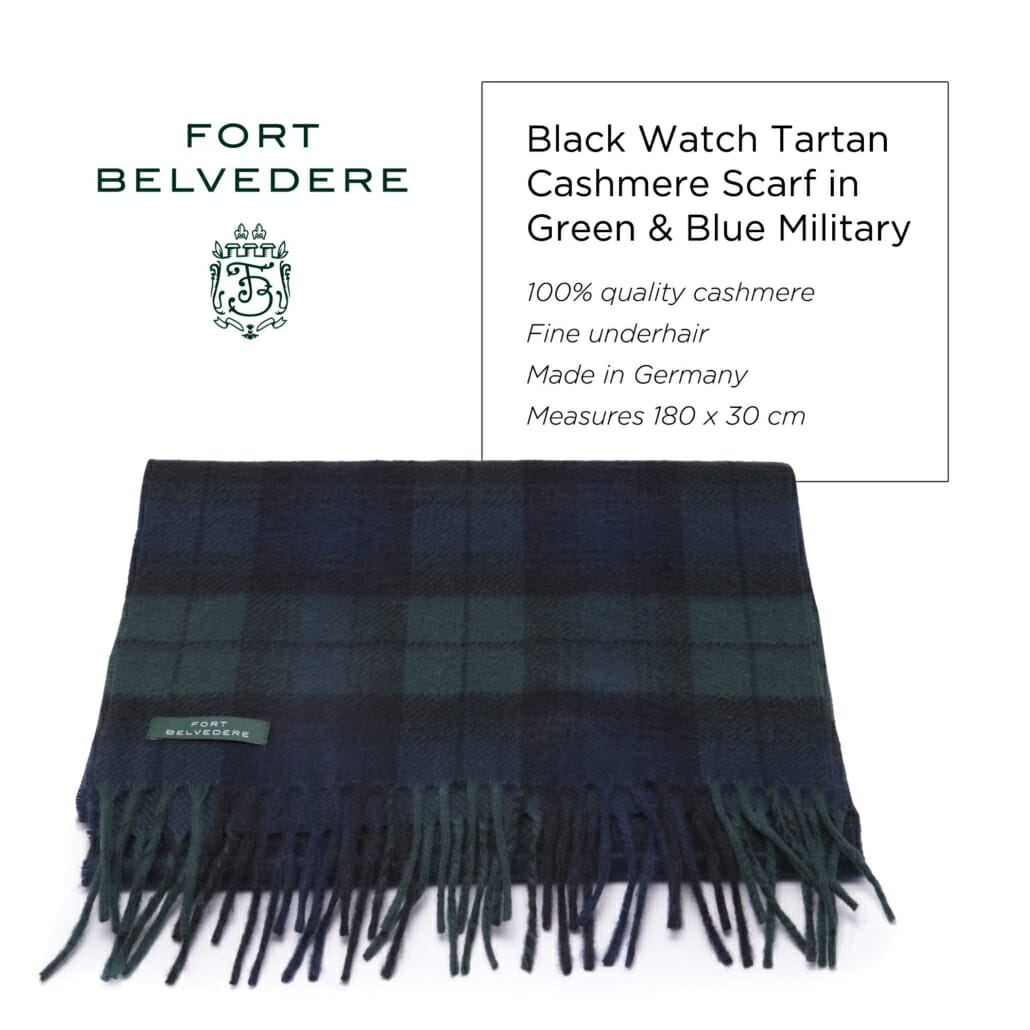

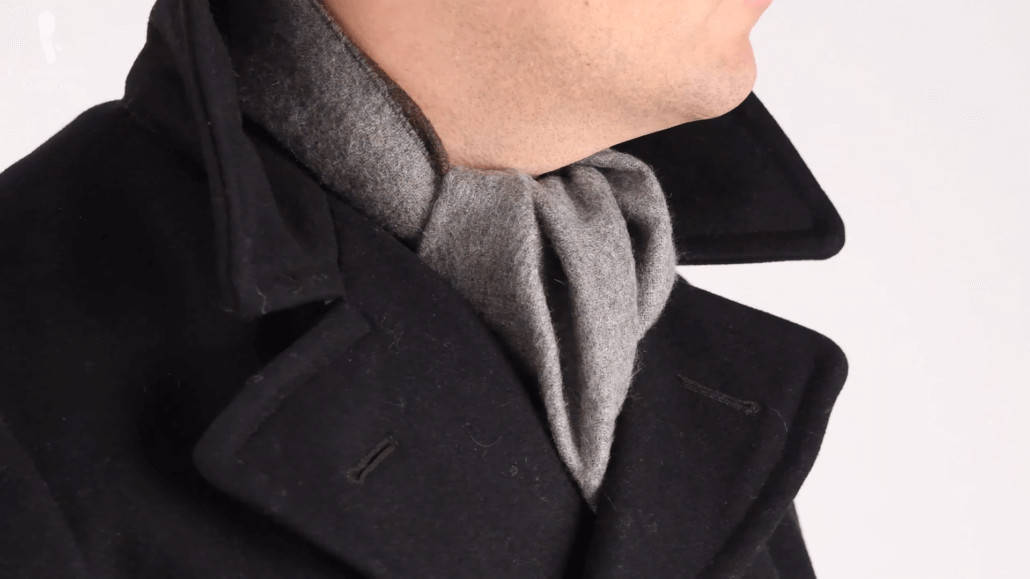
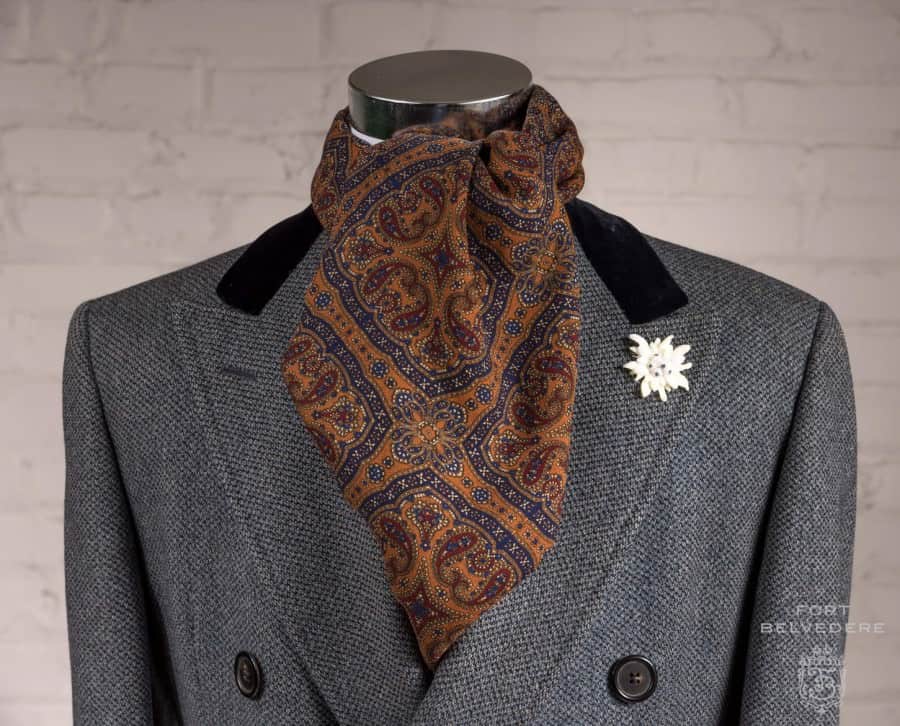
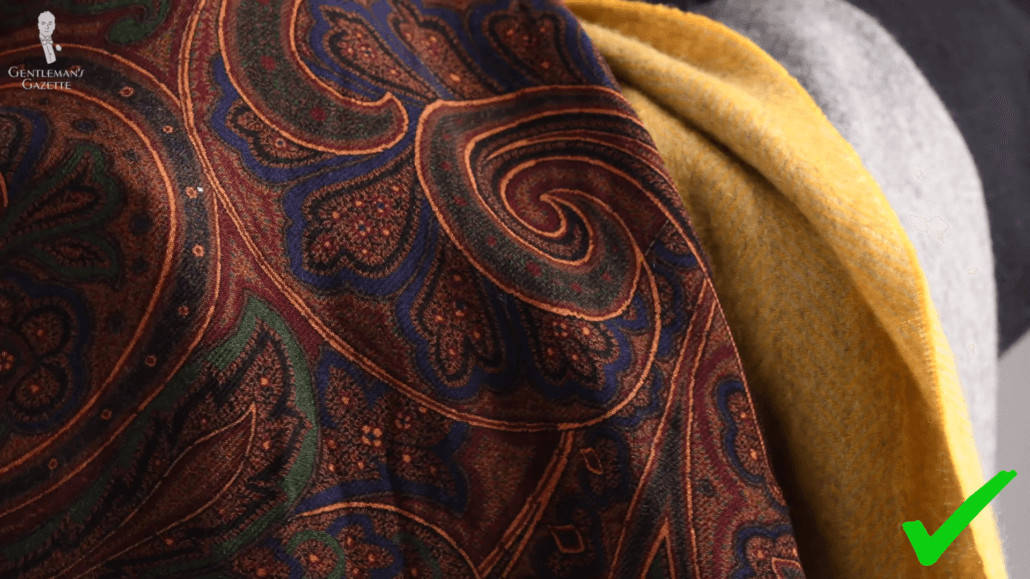

Комментариев нет:
Отправить комментарий